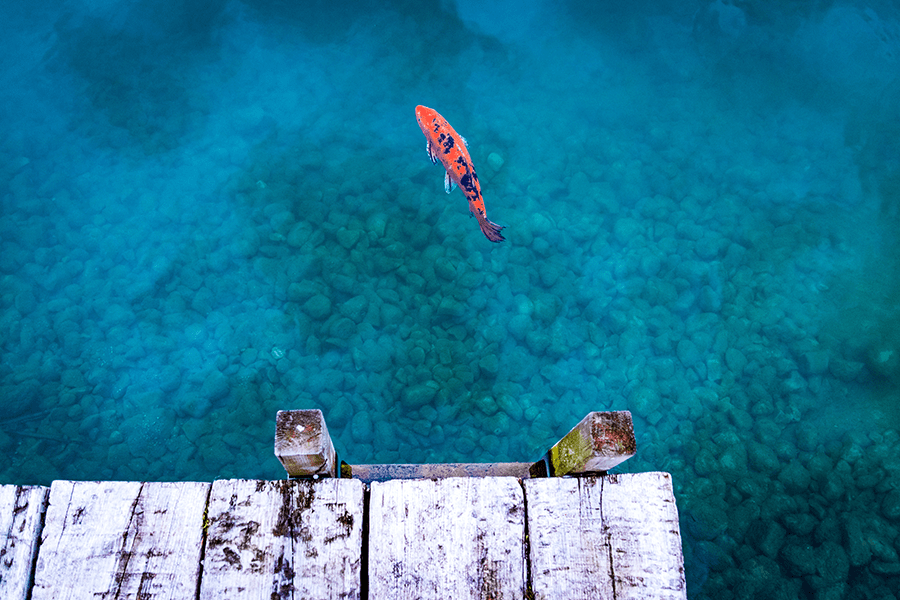There is a popular adage that says “Expect the Unexpected”. This quote is about being ready for anything and not letting your guard down. At face value though, this idiom seems counterintuitive. How can one expect something that is unexpected? We can’t, but we can educate ourselves on the dangers before we embark on an activity.
Magnet Fishing can be dangerous if one is not careful. Many scenarios can result in injury or environmental hazards. However, these dangers are very avoidable by becoming educated on such dangers and by taking deliberate actions to avoid these scenarios.
Magnet Fishing: A Brief Overview
In order to understand the dangers of magnet fishing, we must first understand the basics of the pastime. As you probably know, this hobby consists of tying a strong magnet to a durable rope. This tethered magnet is then dropped into a body of water and allowed to sink to the bottom. The operator slowly drags or bounces the magnet off the waterway floor, hoping to snag something metallic and bring it to the surface.
Many fun and exciting things have been found using this method. Old safes, fishing equipment and gear, bicycles, shopping carts, and tools just to name a few. As fun as this hobby is, there are some unexpected dangers involved.
Magnet Strength
Most people involved in this hobby use what is known as Neodymium magnets. These magnets are often referred to as “Rare Earth Magnets” because the element Neodymium is a rare earth material (more on that later). These magnets are extremely powerful, so powerful that it can be physically impossible to separate them from each other or other metals.
These magnets can have a pull force of 1,500 pounds! when two of these magnets are in proximity to each other, they can easily attract from distances unheard of with other magnets. This attracting force is so strong that two magnets can rush towards each other extremely fast, smashing and or pinching anything in between them such as fingers. They can also attach to other metals this same way.
Another danger posed by this attraction is shrapnel. Yep, you read that right, shrapnel. These magnets are relatively brittle and when they slam together or onto something metal they can chip, sending shards of metal flying in multiple directions.
Something else to consider is the removal of found objects from the magnet. Most items will need to be slid off the side of the magnet as opposed to pulling away. The nature of the beast when magnet fishing dictates that one will find a lot of fishing lures and fishing hooks. Obviously these are sharp and can easily puncture skin.
Finally, we want to consider electronics in this category. Most smart phones today do not use magnetic storage so they should be okay. However, some computers and hard drives can be ruined by these magnets.
Here are a few tips and tricks to avoid getting injured by the magnets themselves (this is not an exhaustive list):
- Always keep the magnet in a non-ferrous container except when in use.
- Be aware of surroundings when the magnet is in use. keep as much distance as possible from metal items and other magnets.
- Do not put magnetic things or finds in your pockets when you are using the magnet.
- Wear puncture resistant gloves for removal of items from the magnet.
- Keep the magnet away from electronic equipment (better safe than sorry).
- Use common sense when deploying these magnets.
Magnet Composistion
As stated above, a lot of these magnets that are used for this hobby are Neodymium magnets. This element is not rare as the name implies, but is used in a variety of products we all know such as cell phones, microphones, windshield wipers and wind turbans.
According to the Royal Society of Chemistry (RSC), the most important use for this metal is when it is combined with Iron and Boron to make these strong magnets. A major concern with use of these magnets is that the RSC lists them as “Moderately Toxic” and as an eye irritant. One should be careful around these magnets and be sure to wash their hands throughly after handling them.
If you would like to read more about the chemical composition of these magnets check out the RSC website here:https://www.rsc.org/periodic-table/element/60/neodymium
Environmental Hazards

Magnet fishing has some great environmental advantages. It cleans the waterways of metallic junk that can harm wildlife and pollute drinking water. However, this hobby can have some adverse effects on the environment.
Occasionally, a magnet will get caught on something under the surface of the water. Often the rig can be retrieved with a little effort. Sometimes the magnet gets so stuck that it must be abandoned, slowly releasing the element into the ecosystem.
This is particularly harmful to water animals as it cause damage to cell membranes resulting in a handful of problems including reproductive disruption. Neodymium will also begin to penetrate into the soil and possibly the drinking water.
Another potential unintended environmental hazard has to do with waterway floor itself. Some sections of waterways have heavy metals, chemicals and/or toxins trapped in the sediment. Excessive disturbances of these areas could be bad for the waterway as a whole.
Dangerous Finds
Part of the allure of magnet fishing is snagging something metal and being overcome with anticipation and excitement of what your find could be. However, there have been some dangerous objects pulled up with these magnets.
Sharp objects such as fish hooks and rusted metal are the most common and are certainly deserve our respect when removing them. However people have found knives, guns, and even unexploded munitions such as hand grenades! If something like this is found, contact the local authorities immediately.
Legality Gray Areas

This pastime is relatively new and is gaining popularity around the world. With this new found fame, some are questioning if certain laws pertain to magnet fishing. For example in the state of Washington there are no explicit laws regarding the hobby. However, there are rules about disturbing aquatic areas under the control of the Department of Natural Resources.
There may also be laws or rules regarding the removal of ancient artifacts or artifacts of historical significance. Always check with the state and local governing agencies before you go, but with the infancy of the hobby, some rules and laws could change in their interpretation.
Consider who owns the land and waterway you are searching. Trespassing could come into play here if you deploy on private property without prior consent from the land owner. Discuss what is to be done with whatever is found before you begin. Stay informed.
Other Intrinsic Dangers
As with all outdoor hobbies there are certain intrinsic dangers involved. The most obvious and pertinent to magnet fishing is that of drowning. This hobby must take place near deep bodies of water and there is always the potential of falling in.
Other concerns are very similar to any other outdoor recreational activity. Snakes, spiders, bees, dogs, and anything else nature wants to send your way could potentially be a hazard and vary from one outing to the next.
Rough, uneven, and unfamiliar terrain should also be considered and planned for on your outings.
Have Fun
These dangers are not listed to scare one out of magnet fishing. Instead they are here to help keep everyone safe! This hobby is fun and addicting and you never know what you are going to find. If you do choose to go out, use this article to get your brain turning, to think about potential hazards as this is not an exhaustive list of dangers. Stay safe and have fun!
Resources Used in this Article
https://www.rsc.org/periodic-table/element/60/neodymium
https://geology.com/articles/rare-earth-elements/
https://van.physics.illinois.edu/qa/listing.php?id=494
https://www.spokesman.com/stories/2019/jul/21/popularity-of-magnet-fishing-growing-in-spokane-de/
https://www.lenntech.com/periodic/elements/nd.htm
*photo credits
Danger Sign Photo by Markus Spiske on Unsplash
Fish Photo by Tim van der Kuip on Unsplash
Thinking man Photo by bruce mars on Unsplash

